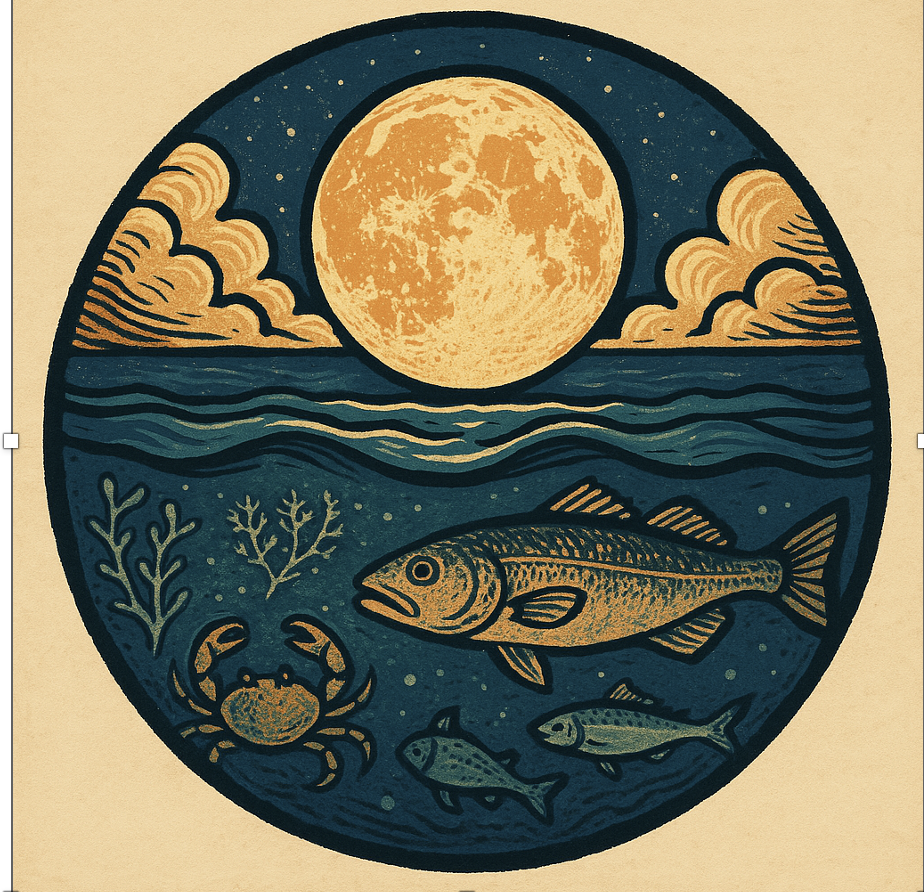The prevailing perception of the nature of the Barents Sea is characterized by an ecological paradigm, a perspective with roots back to Charles Darwin’s theories. This is a systems perspective on nature, where ecosystems are considered as a food chain. In the Barents Sea, this chain is studied from plankton to fish species and marine animals. Growth in the food chain is determined by relationships between species. The ecosystem is regarded as an unstable, dynamic system, where changes propagate up the chain. Temperature affects all biomass growth and recruitment, and random, wind-driven temperature changes affect the entire food chain.
The ecological perspective of the ecosystem leads to the nature of the ecosystem being perceived as the result of random changes without a normal state. When the ecosystem is characterized by random changes, it also has no signature. A lack of signatures leads to a lack of information about future growth. Insufficient information about future growth leads to an inability to manage future resources. One can make annual estimates of biomass in the sea. Estimates can be used in models that present historical growth. At the same time, growth has information about expected future growth. The challenge lies in how one views uncertainty from the population’s surroundings. If the environmental impact is periodic, there will be a delay between the estimated biomass and the actual biomass.
New questions about marin ecosystems
The study of the biomass of Norwegian-Arctic cod had revealed that the biomass had periodic changes with the signature periods [6, 18, 75] years. The signature period of 6 years was a resonant recruitment period with a temperature-driven growth period of 18 years and a temperature cycle of 75 years. This represented a new perspective on biomass growth in the Barents Sea. With evolution, the biomass had a favorable adaptation to a lunar-driven signature. This created a new perspective on the nature of the Barents Sea. The next question was whether the entire food chain in the Barents Sea has a lunar-driven signature.
The signature of the Barents Sea food chain
A comprehensive study of the nature of the Barents Sea was started. It included a wavelet spectrum analysis of available data series on the ecosystem in the Barents Sea. This included data series for tides, sea temperature, plankton, capelin, herring, haddock and cod. It turned out that the entire food chain was characterized by a lunar-driven signature. Growth models and recruitment models for the fish species were developed to confirm how a lunar-driven signature characterizes the entire food chain in the Barents Sea. The study of the food chain in the Barents Sea was presented as part of a doctoral thesis in 2004. It showed that the chain of events in the food chain can be portrayed as a chain of signatures:
- Temperature: [1/2, 1, 4] x 18.6 years,
- Plankton: [1/2, 1, 4]x18.6 years,
- Capelin: [1/6, 1/2, 1, 4]x18.6 years
- Herring: [1/3, 1/2, 1, 4] x18.6 years,
- Haddock: [1/3, 1, 4] x18.6 years,
- Cod: [1/3, 1, 4] x 18.6 years.
The biomass signature (T, F) has cycle periods T = [recruitment, biomass growth, climate driven growth]. The phase F of the periods is a reference to the time when the period has a maximum. In this way, the signatures tell how changes in the food chain follow each other in time.
Lunar-driven ecological resonance
The study showed that the Barents Sea ecosystem is affected by stationary temperature variations with a clear lunar-driven signature. This leads to the entire food chain optimizing its growth by adapting to the signature of the temperature. The signature spreads up the food chain. The timing of recruitment creates a biological resonance that maximizes biomass growth over several generations. If the management does not consider the good vintages that create biological resonance, the biomass will over time adapt to a lower level.
Lunar-driven biomass reduction
The signature of the temperature has a climate period of 4 × 18.6 years. This long climate cycle affects growth throughout the food chain. The biomass has a gradual growth over a period of about 36 years. This is followed by a new period of gradual cooling and reduced growth, over a period of about 36 years. When the temperature approaches a minimum, there is a risk of overloading the biomass.
Management of lunar-powered biomass
Management is based on the idea of calculating future biomass and then controlling future biomass. When the biomass has a periodic signature, one has knowledge of the expected future development of the ecosystem. Then it is possible calculate the expected future biomass and then control future biomass growth.
Summary
The study of data series from the marine ecosystem in the Barents Sea revealed that:
- The food chain in the marine ecosystem follows a lunar-driven signature
- Fish species optimize their growth by recruiting in resonance with the signature of the temperament
- A lunar-driven signature contains information about expected growth that can be used for better forecasting and management of biomass growth in the Barents Sea
- The signature climate period of 75 years forms the basis for large periodic biomass growth and large biomass reduction in the Barents Sea
Together, this forms a new understanding of the nature of the marine ecosystem in the Barents Sea.
Moonlit tides
Referanser
- Yndestad H. (2001). Earth nutation influence on Northeast Arctic cod management. ICES Journal.
- Yndestad H, Stene A. (2002). System dynamics of the Barents Sea capelin. ICES Journal.
- Yndestad H. (2003). The code of the long-term biomass cycles in the Barents Sea.
- Yndestad H. (2004). The cause of Barents Sea biomass dynamics. Journal of Marine Systems.
- Yndestad, H. 2008. The Barents Sea ecosystem dynamics as a coupled oscillator to long tides. Annual Science conference 22-26 September. 2008. Theme Session Coupled physical and biological models: parameterization, validation and application. ICES CM 2008/L:01. Halifax.
- Yndestad H. (2009). The influence of long tides on ecosystem dynamics in the Barents Sea. Deep-Sea Research II.

